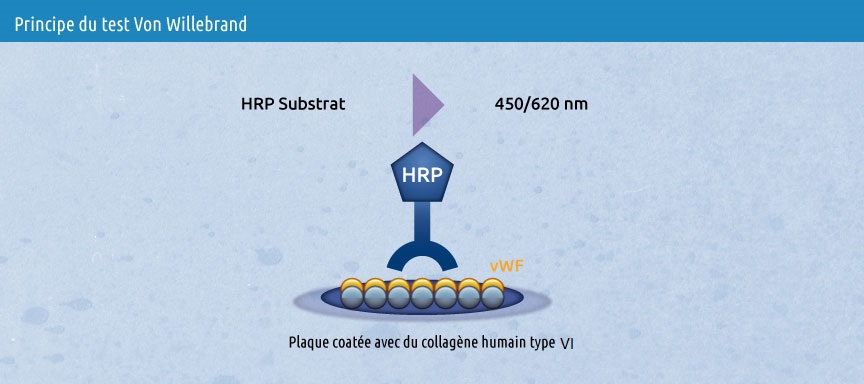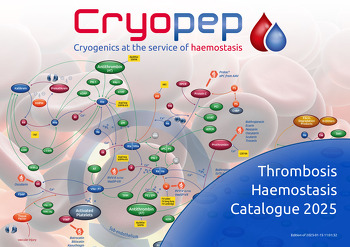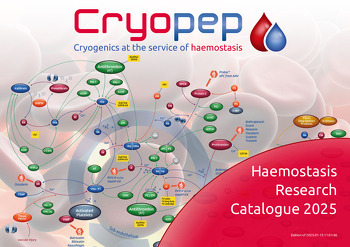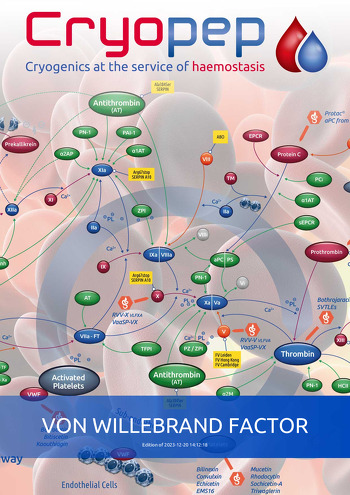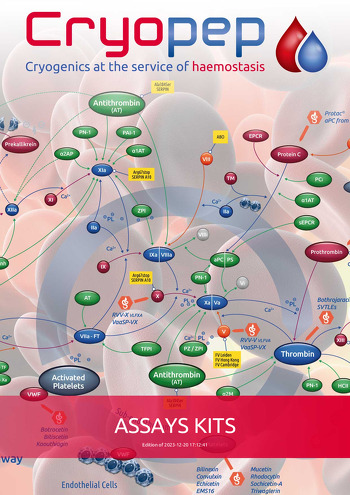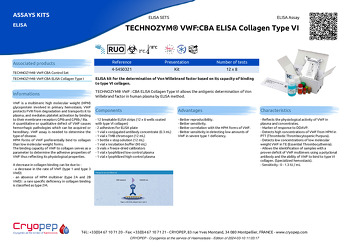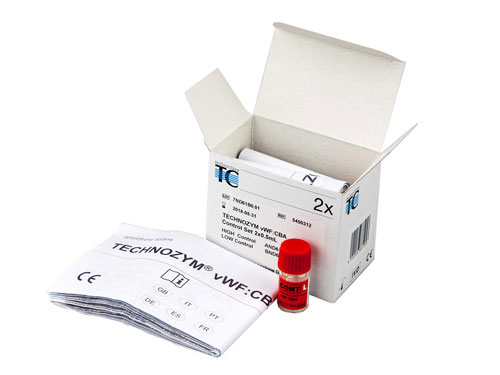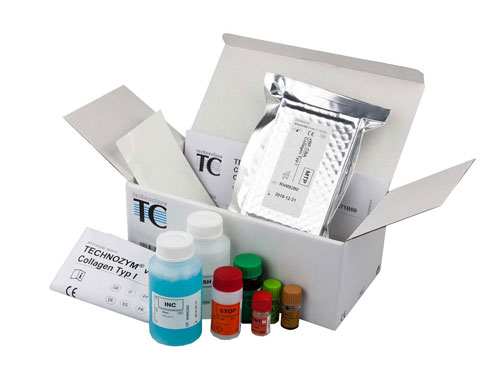HEMOSTASIS COAGULATION ROUTINE REAGENTS VON WILLEBRAND FACTOR VWF : COLLAGEN BINDING ASSAYS
HEMOSTASIS COAGULATION RESEARCH REAGENTS ASSAYS KITS ELISA
TECHNOZYM® VWF:CBA ELISA Collagen Type VI
ELISA kit for the determination of Von Willebrand factor based on its capacity of binding to type VI collagen.
TECHNOZYM® VWF : CBA ELISA Collagen Type VI allows the antigenic determination of Von Willebrand factor in human plasma by ELISA method.
Advantages
- Better reproducibility.
- Better sensitivity.
- Better correlation with the HPM forms of VWF.
- Better sensitivity in detecting low amounts of VWF in severe type 1 deficiency.
Informations
VWF is a multimeric high molecular weight (HPM) glycoprotein involved in primary hemostasis. VWF protects FVIII from degradation and transports it to plasma, and mediates platelet activation by binding to their membrane receptors GPIb and GPIIb / IIIa.
A quantitative or qualitative defect of VWF causes hemorrhagic pathologies which can be acquired or hereditary. VWF assay is needed to determine the type of disease.
HPM forms of VWF preferentially bind to collagen than low molecular weight forms.
The binding capacity of VWF to collagen serves as a parameter to determine the adhesive properties of VWF thus reflecting its physiological properties.
A decrease in collagen binding can be due to :
- a decrease in the rate of VWF (type 1 and type 3 VWD)
- an absence of HPM multimer (type 2A and 2B VWD) : a rare specific deficiency in collagen binding is classified as type 2M.
Documentation
Download the product sheetPrice list, safety data sheets and notices are accessible to our registered customers.
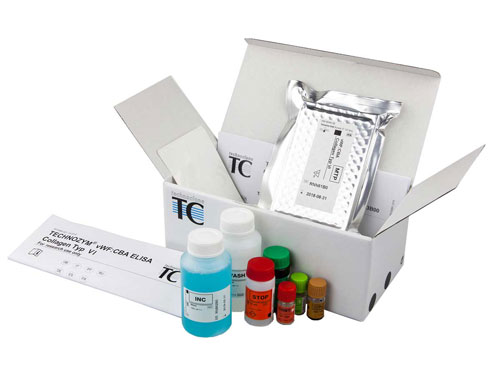
ELISA Assay







References
| 4-5450321 | Kit | 12 x 8 tests |












